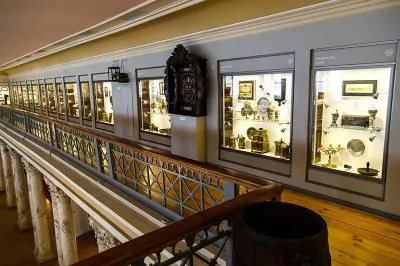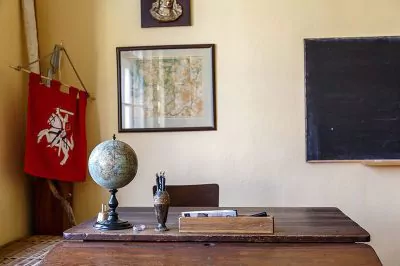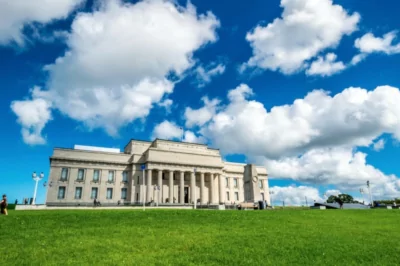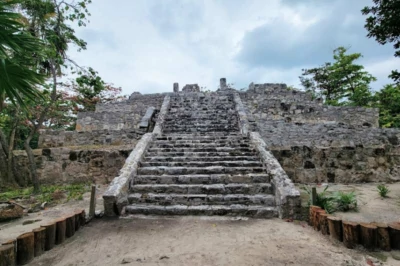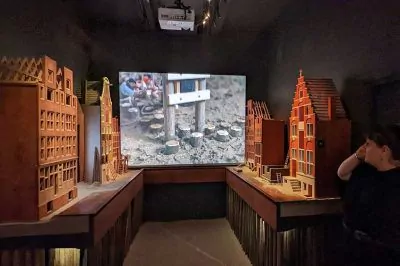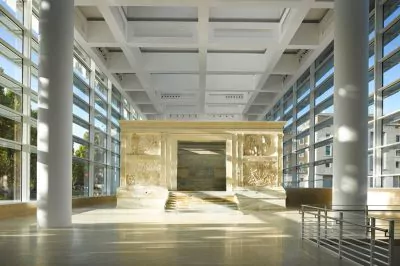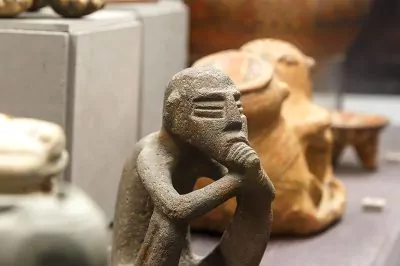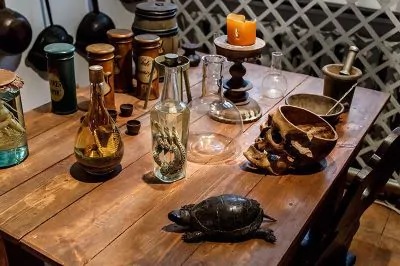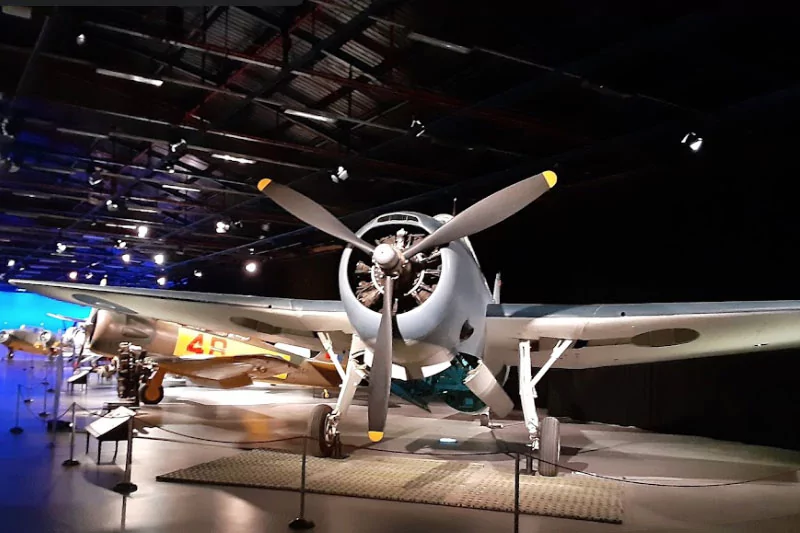
Air Force Museum of New Zealand: Rich History of Aviation
Air Force Museum of New Zealand, located in Wigram, Christchurch, is a captivating cultural and historical attraction that tells the story of aviation in New Zealand.
The museum was established in 1987 with the aim of preserving the history of the Royal New Zealand Air Force and the wider aviation industry in New Zealand.
The museum has since grown to become one of the largest and most comprehensive aviation museums in the Southern Hemisphere, attracting visitors from all over the world.
Visitors to the museum can expect to see an extensive collection of aircraft, as well as artifacts and memorabilia that tell the story of New Zealand’s aviation history.
The museum provides an educational and entertaining experience for visitors of all ages, with interactive exhibits and hands-on activities that allow visitors to explore the history of aviation in New Zealand in a unique and engaging way.
History
Air Force Museum of New Zealand was established in 1987, with the purpose of preserving the history of the Royal New Zealand Air Force (RNZAF) and the wider aviation industry in New Zealand. The museum is located on the site of the former RNZAF Base Wigram, which was an important training base for pilots during World War II.
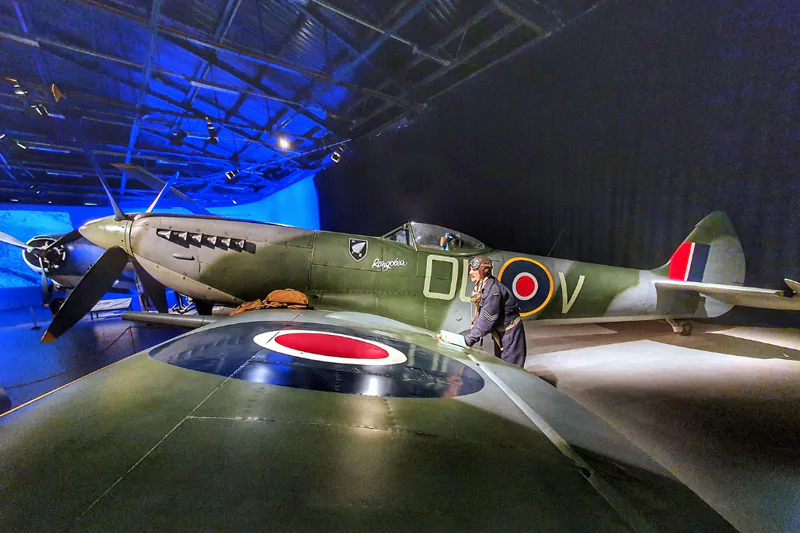
The museum started as a small collection of aircraft and memorabilia housed in one of the original RNZAF hangars. Over the years, the museum has grown significantly, and today it boasts one of the largest and most comprehensive collections of aircraft and aviation-related artifacts in the Southern Hemisphere.
Exhibits and Collections
Air Force Museum of New Zealand boasts an extensive collection of aircraft, artifacts, and memorabilia that tell the story of aviation in New Zealand. The museum’s collection includes over 30 aircraft, ranging from World War I-era biplanes to modern fighter jets, as well as a variety of engines, weapons, and other aviation-related artifacts.
In addition to its collection of aircraft, the museum also features a range of artifacts and memorabilia that provide insight into the daily lives of pilots and other aviation personnel. These artifacts include uniforms, medals, and other personal items, as well as technical equipment and instruments used in aircraft maintenance and operation.
One of the unique features of the museum’s exhibits is the interactive displays and hands-on activities that allow visitors to experience the history of aviation in New Zealand in a more immersive way.
For example, visitors can sit in a cockpit simulator and experience what it’s like to fly a plane, or explore a World War II-era control tower and learn about the important role that air traffic control played during the war.
Horizon to Horizon gallery
The Horizon to Horizon gallery is one of the galleries in the Air Force Museum of New Zealand, located in Christchurch. This gallery is dedicated to showcasing the history of the Royal New Zealand Air Force (RNZAF) from its beginnings to the present day.
The name of the gallery, Horizon to Horizon, is derived from the RNZAF motto, Per Ardua ad Astra, which means Through Adversity to the Stars. The gallery displays the evolution of the RNZAF from its earliest days, when pilots flew open-cockpit biplanes, to its current modern-day capabilities.
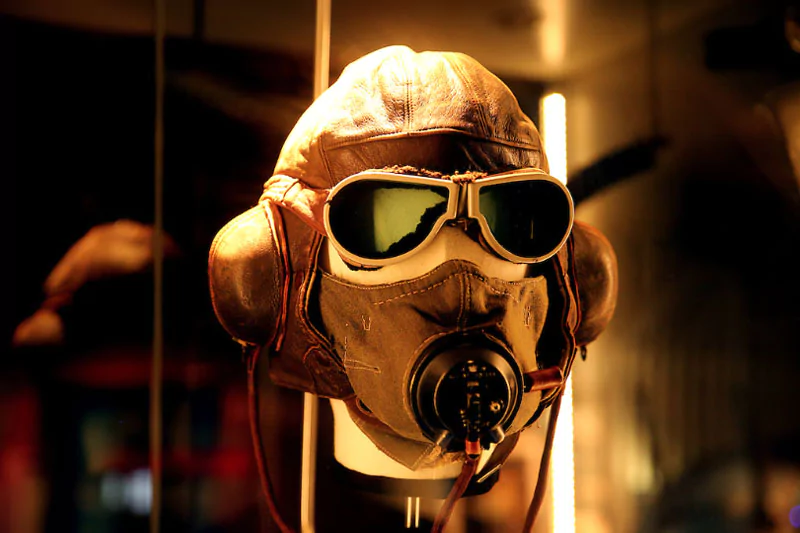
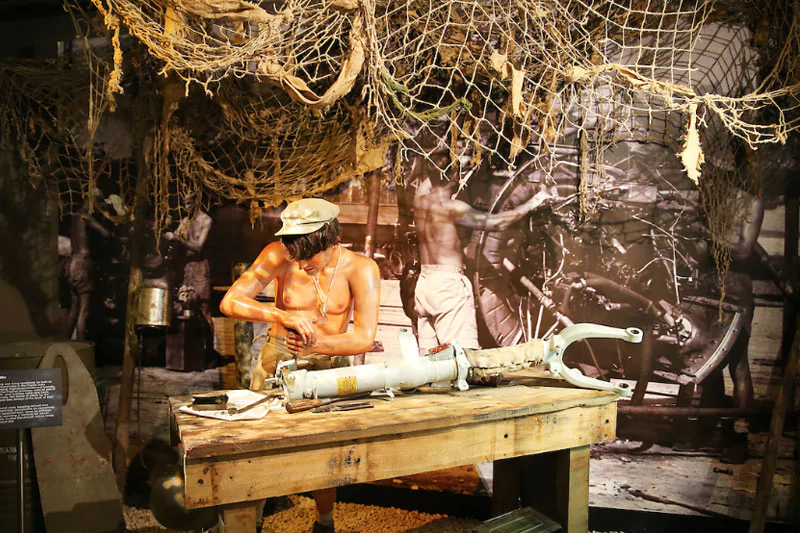
The Horizon to Horizon gallery features a number of exhibits and displays that tell the story of the RNZAF. These include historical aircraft, such as the Bristol Fighter, the P-40 Kittyhawk, and the Aermacchi MB-339 jet trainer, as well as engines, weapons, uniforms, and other artifacts from the RNZAF’s history.
Visitors to the Horizon to Horizon gallery can learn about the significant contributions made by the RNZAF during World War II, including its involvement in the Battle of Britain, the Pacific Campaign, and the Korean War.
Caldwell Gallery
This gallery is dedicated to the life and career of Group Captain Leonard Trent Caldwell, one of New Zealand’s most distinguished Second World War pilots.
Leonard Caldwell joined the Royal New Zealand Air Force (RNZAF) in 1936. He flew in a variety of aircraft including the Bristol Blenheim, P-40 Kittyhawk and P-51 Mustang. He served in the Royal Air Force (RAF) during World War II and became one of the leading Allied fighter pilots, winning dozens of victories and receiving numerous honors and awards.
The gallery features a range of artifacts and exhibits, including photographs, medals, documents and personal items belonging to Caldwell. One of the highlights of the Caldwell Gallery is a replica of Caldwell’s P-40 Kittyhawk fighter jet, which visitors can see up close.
Aircraft hall
This gallery is dedicated to displaying a collection of historic aircraft from various periods of New Zealand’s aviation history.
The Aircraft Hall features a wide range of aircraft, from the earliest biplanes to today’s modern fighter aircraft. Some of the most important aircraft on display are the De Havilland Tiger Moth, Douglas DC-3, Gloster Meteor and A-4 Skyhawk.
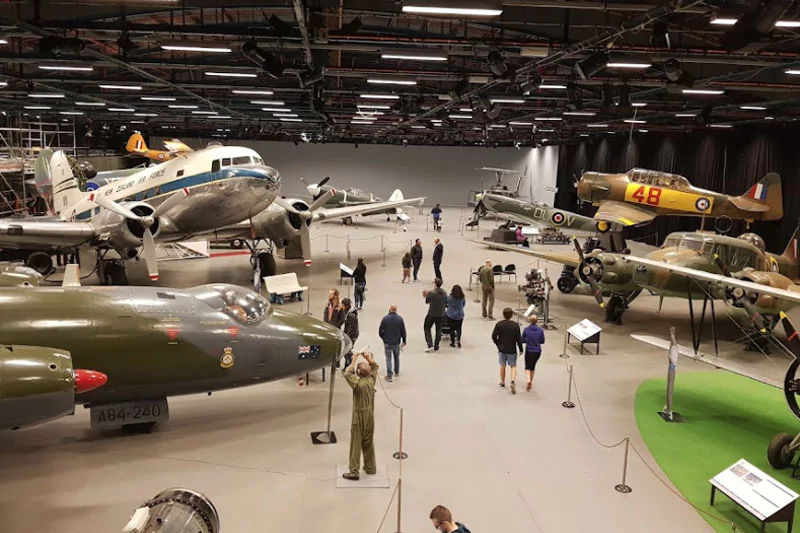

In addition to airplanes, the Aircraft Hall also features interactive exhibits that allow visitors to learn more about aviation history and technology. For example, visitors can climb into a replica of the cockpit of a P-40 Kittyhawk fighter jet and experience what it is like to fly the aircraft.
Another popular interactive exhibit in the Aircraft Hall is the “Build an Airplane” activity, where visitors can design and build their own virtual airplane and then see how it performs in a simulation.
To aircrafts to see at the museum
The Air Force Museum of New Zealand has a fantastic collection of historic aircraft that are worth seeing. Here are some of the top aircrafts to see in the museum:
- De Havilland Mosquito: This aircraft is a rare example of a World War II-era wooden bomber and is one of only a few remaining in the world.
- Aermacchi MB-339: This jet trainer aircraft was used by the RNZAF as its primary trainer from the 1990s to the 2010s.
- Lockheed P-3K2 Orion: This long-range maritime patrol aircraft was used by the RNZAF for more than 50 years for surveillance, search and rescue, and anti-submarine warfare.
- Douglas DC-3: This iconic transport aircraft played a crucial role in New Zealand’s aviation history, transporting passengers and cargo around the country from the 1940s to the 1970s.
- Bristol Freighter: This unique aircraft was designed for cargo transport and has a distinctive double-bubble fuselage.
- Supermarine Spitfire: The Spitfire is one of the most famous fighter aircraft of World War II, and the museum’s example is a rare restored Mk XVI version.
- North American Harvard: This aircraft was used by the RNZAF as a trainer and has a distinctive yellow paint scheme.
- Boeing 727-22C: This aircraft was used by Air New Zealand for domestic and international flights from the 1960s to the 1980s and is the last surviving example of its type in New Zealand.
- A-4 Skyhawk: This jet fighter aircraft was used by the RNZAF from the 1970s to the 2000s and is a popular exhibit in the museum.
- De Havilland Tiger Moth: This biplane trainer aircraft was used by the RNZAF in the early days of aviation in New Zealand and is a classic example of early aviation technology.
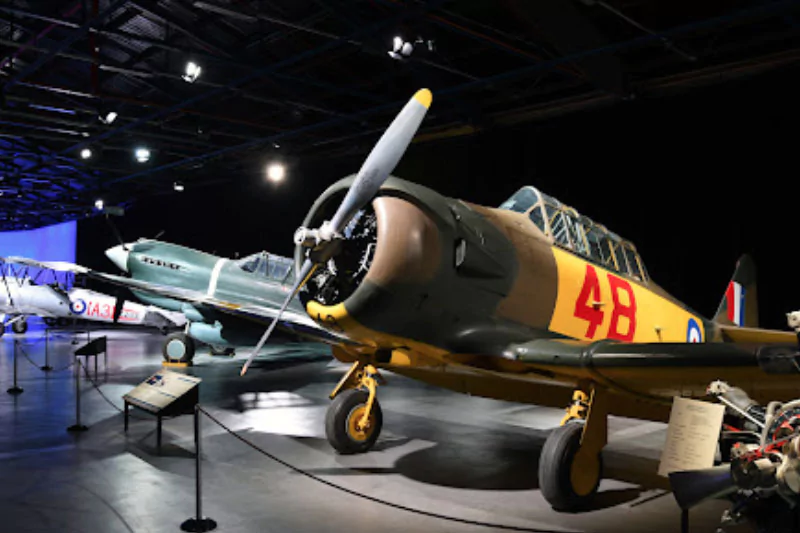
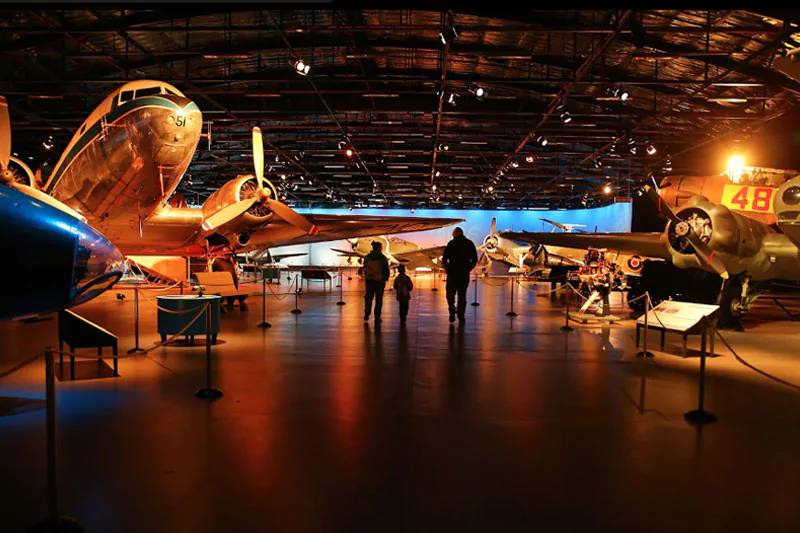
Interactive exhibits
The Mosquito Mission Flight Simulator
The Mosquito Mission Flight Simulator is an interactive exhibit at the New Zealand Air Force Museum that allows visitors to experience what it was like to fly a De Havilland Mosquito bomber during the Second World War.
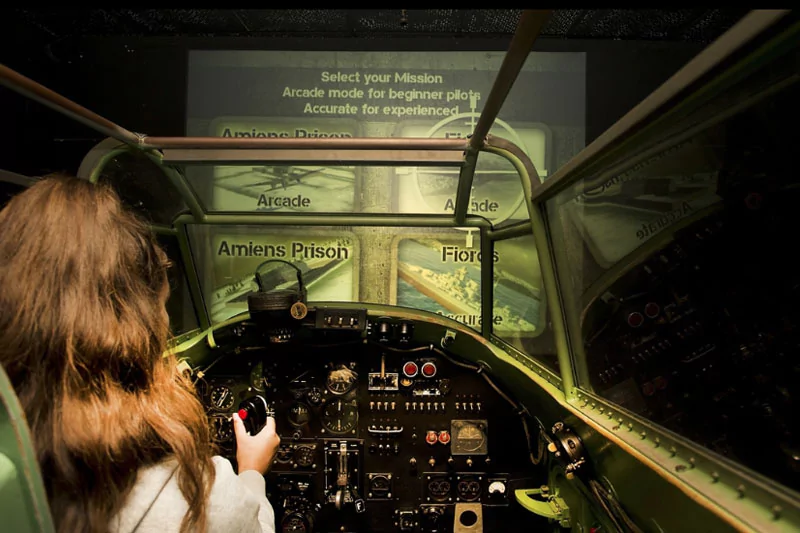
The Mosquito was a fast and versatile aircraft used for a variety of missions including bombing, reconnaissance and night fighting.
The simulator uses a combination of motion, sound and visuals to create a realistic experience of flying the Mosquito. Visitors can sit in the cockpit of the simulator and participate in a simulated bombing mission over enemy territory, complete with sound effects, vibrations and simulated enemy fire.
Balloon Hunters
Balloon Hunters is another interactive exhibit at the New Zealand Air Force Museum that allows visitors to experience what it was like to be a fighter pilot in the First World War.
The exhibition is designed as a virtual reality game where visitors don a headset and take on the role of a pilot in a dogfight against enemy aircraft.
Opening hours and entrance fees
The Air Force Museum of New Zealand is open seven days a week, from 09:30 am to 4:30 pm. The museum is closed on Christmas Day. Admission to the museum is free.
How to get there?
The museum is located at 45 Harvard Avenue, Wigram, Christchurch, which is approximately 15 minutes’ drive from the city center. There is ample free parking available on-site for visitors.
Visitors can also reach the museum via public transportation. The nearest bus stop is located on Main South Road, which is a short walk from the museum.
Conclusion
All in all, the New Zealand Air Force Museum is a must-visit for anyone interested in aviation history, military history or engineering.
The museum offers a fascinating collection of historic aircraft, interactive exhibits and educational displays that showcase New Zealand’s rich aviation history and the role of the Royal New Zealand Air Force in national and international conflicts.
